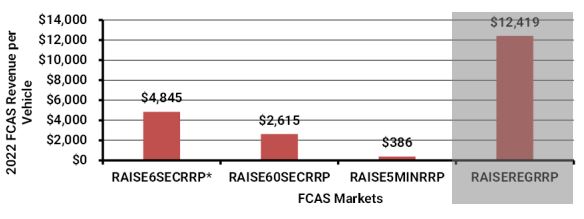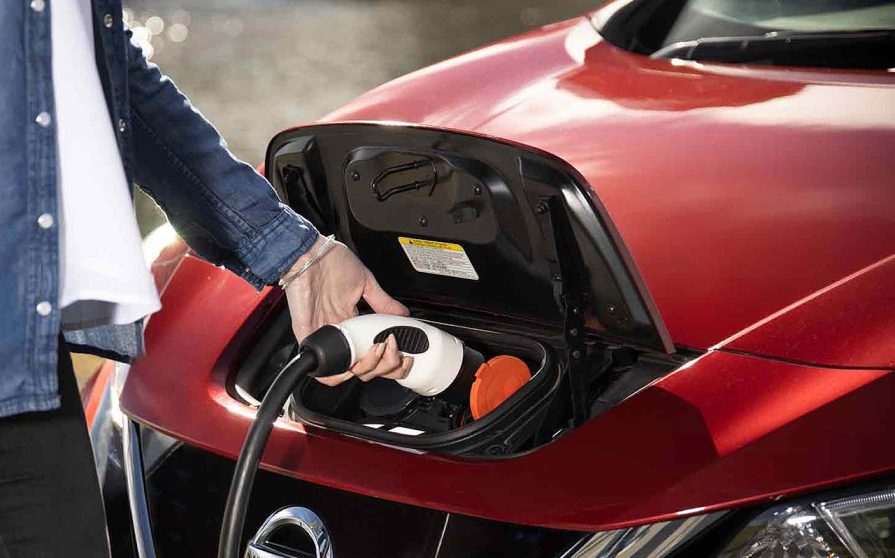A new report from the Australian Renewable Energy Agency (ARENA) reveals that using vehicle-to-grid (V2G) technology to provide Frequency Control Ancillary Services (FCAS) to the National Electricity Market (NEM) is a potentially lucrative way for fleet owners to monetise their electric vehicles (EVs).
The Insights from the Realising Electric Vehicle-to-Grid Services Project – Final Report comes after a two-year trial that explored the charging habits of EV drivers, the ability of EVs to provide grid ancillary services using V2G, and how EVs can provide a revenue stream for electric-fleet owners.
The Realising Electric Vehicle-to-Grid Services (REVS) project, launched in 2020, initially comprised 51 Nissan Leaf vehicles and 51 bidirectional Wallbox Quasar chargers across 11 buildings in Canberra. Data was however available for only 38 chargers, and discharge data was only available for 29 of them.
Sydney-headquartered research and advisory services Energeia was engaged to analyse the finding that included charger data, booking data, and the time stamps of grid events. This was then used to determine the economic value of using EVs in the FCAS market.
Energeia found that, based on 2022 data, the average EV could earn about $12,000 (USD 7,940) participating in the New South Wales (NSW) FCAS raise regulation market or about $2,600 in the NSW FCAS raise 60-second contingency market.
Similarly, the average vehicle could earn about $9,000 from participating in the NSW FCAS lower regulation market, or $2,000 from participating in the NSW FCAS lower 60-second contingency market.

Image: ARENA
Energeia said the results indicate that V2G could potentially be earning thousands of dollars per vehicle in the FCAS market, with the prospect for much higher profits if more powerful chargers were utilised.
“It is clear from the REVS trial data … that using V2G to provide FCAS to the grid has the potential to become a lucrative and cost-effective way for vehicle fleet owners to subsidise incorporation of EVs into their fleet,” it said.
Energeia said FCAS prices typically peaked in the late afternoon to early evening for the period observed, which aligned well with commercial vehicle availability.
“More than half of the discharging sessions started when the vehicle had an SOC of more than 90%, meaning that when FCAS were required, the vehicles were often fully charged,” the report says.
While some owners of EV fleets may be concerned that participation in the FCAS markets could result in drainage of vehicle batteries to a low level and have a significant impact on battery degradation, Energeia said this was not the case.
The total annual energy consumption of vehicles throughout the REVS trial was 18.4 MWh while the total energy exported from the EVs was 0.146 MWh, or 0.79% of total charging energy, highlighting how the trial vehicles were rarely called upon to provide FCAS services.
“The data shows little difference in starting and ending state of charge (SOC) during grid events, suggesting that contingency events require only a small amount of energy from these vehicles,” Energeia said in the report.
“This verifies that the number of FCAS events requiring energy to be drawn from EV batteries was minimal, suggesting low risk of premature battery degradation for EV owners participating in FCAS services.”
The REVS trial comprised a consortium of industry partners including Australian Capital Territory (ACT) electricity retailer ActewAGL, the Australian National University (ANU), JET Charge, Evoenergy, SG Fleet, the ACT government and Nissan.
Bjorn Sturmberg, Research Leader of ANU’s Battery Storage and Grid Integration Program, said V2G technology is available in a select number of mass market vehicles and chargers, and the maturity of the technology has already been demonstrated in overseas trials.
“EV batteries are large – roughly five times larger than household batteries, and when fully charged they typically store about as much energy as an average household uses over two to four days, so the national fleet of EV batteries could play a vital role in avoiding blackouts by jumping in to support the grid during disturbances, such as a fossil fuel generator trip,” he said.
The ANU is preparing a RoadMap for V2G, based on the REVS trial data.
ARENA Chief Executive Darren Miller said the agency would continue to focus on commercialising technologies than can aid the integration of EVs into the electricity system.
“Given its potential capability to provide similar services as household batteries, V2G has the opportunity to transform a vehicle into a revenue-generating device for consumers, through access to energy and network service markets and also to provide power solutions for the grid,” he said.
This content is protected by copyright and may not be reused. If you want to cooperate with us and would like to reuse some of our content, please contact: editors@pv-magazine.com.








By submitting this form you agree to pv magazine using your data for the purposes of publishing your comment.
Your personal data will only be disclosed or otherwise transmitted to third parties for the purposes of spam filtering or if this is necessary for technical maintenance of the website. Any other transfer to third parties will not take place unless this is justified on the basis of applicable data protection regulations or if pv magazine is legally obliged to do so.
You may revoke this consent at any time with effect for the future, in which case your personal data will be deleted immediately. Otherwise, your data will be deleted if pv magazine has processed your request or the purpose of data storage is fulfilled.
Further information on data privacy can be found in our Data Protection Policy.